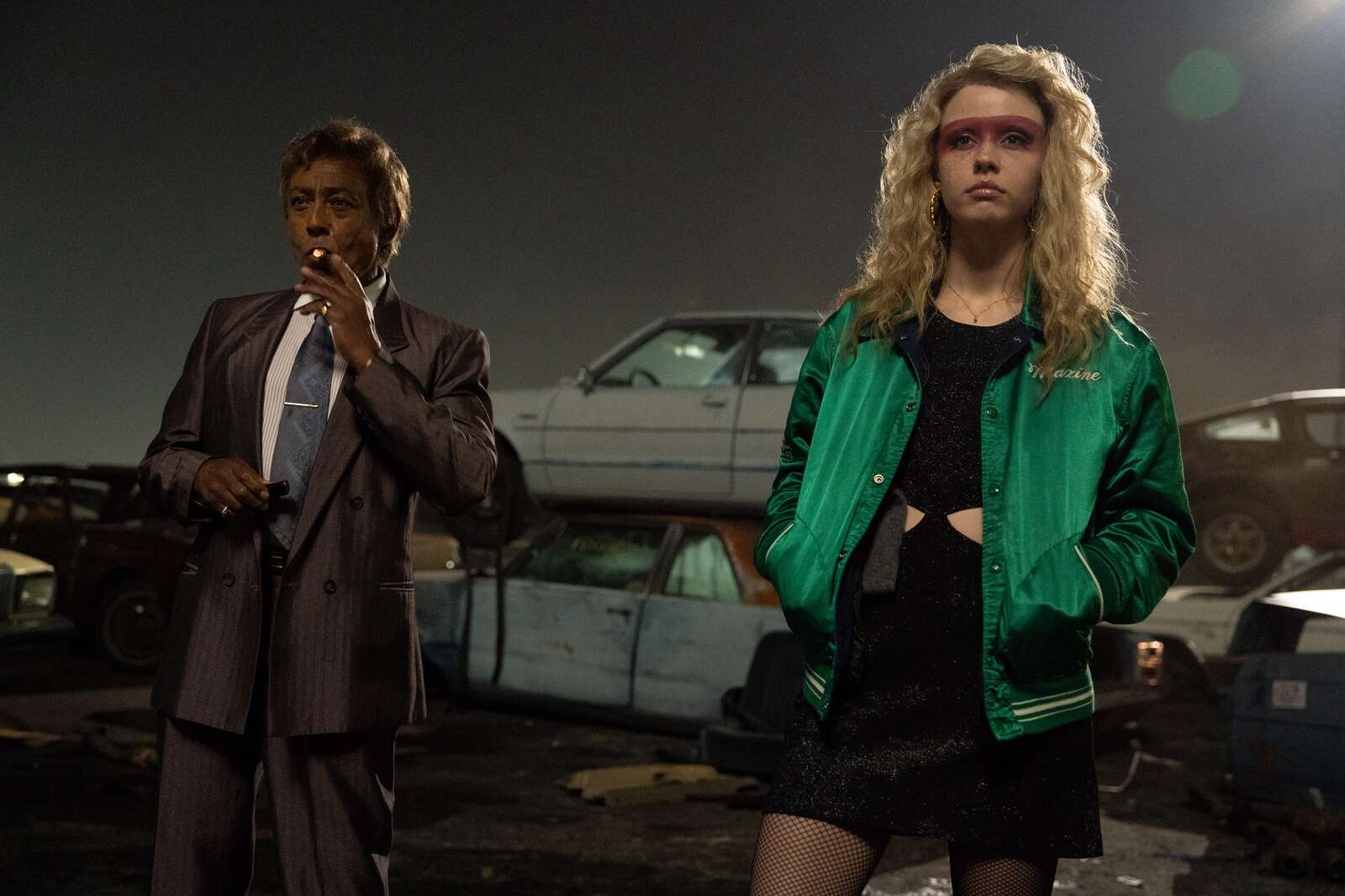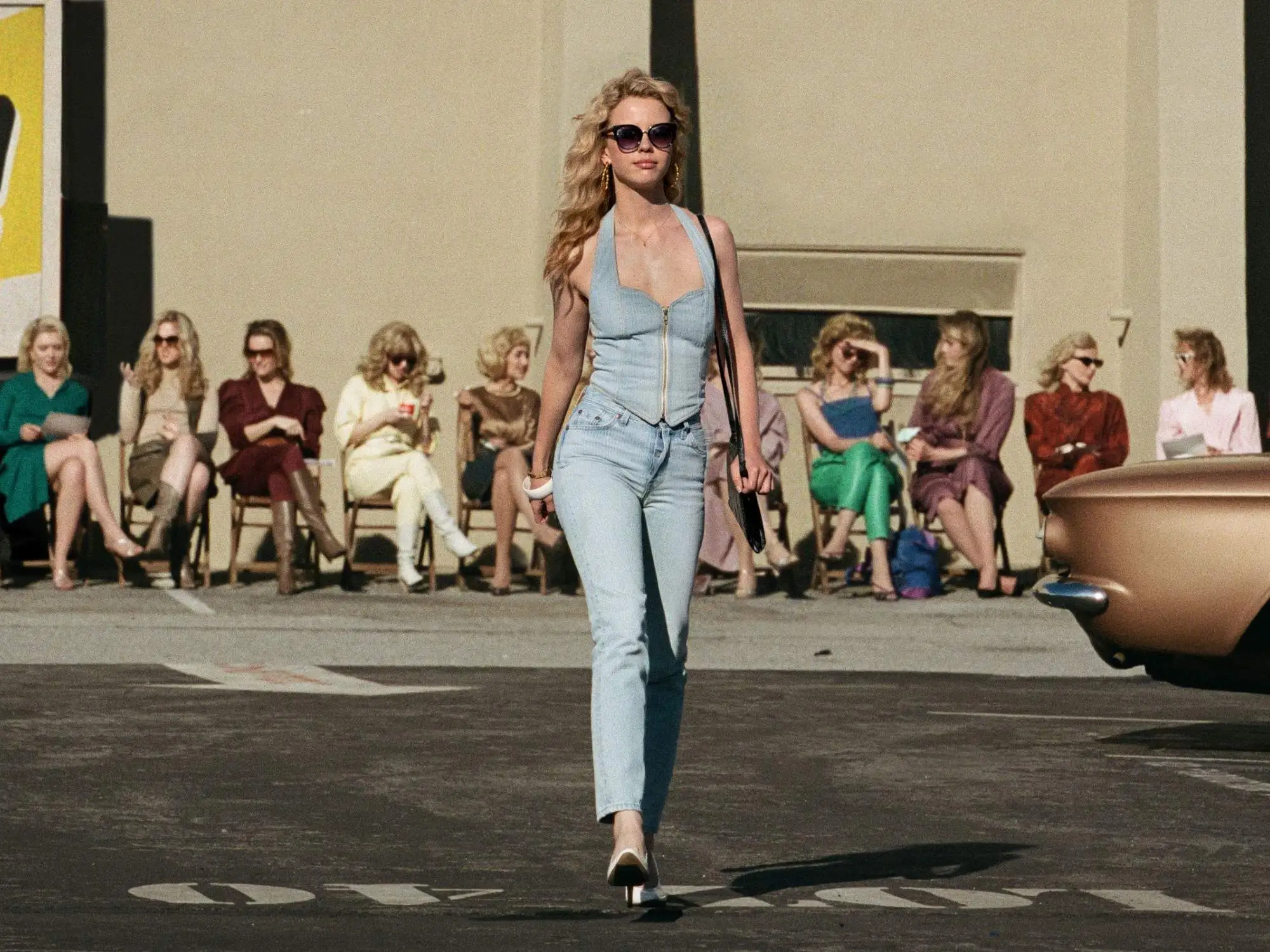
This story contains moderate spoilers for MaXXXine. In MaXXXine, even as the titular aspiring actress played by Mia Goth finds herself and everyone around her being hunted by a killer, she refuses to be a victim. She’s the star of her own cinematic universe, and as she frequently repeats in the film, “I will not accept a life I do not deserve,” you can expect an untimely, gruesome death is not a part of her final act.
Rather, it’s clear that Maxine Minx will go to extreme lengths of self-preservation while investigating the murderer on her trail so she can step into the spotlight as she sees fit. In doing so, the new A24 horror film—Goth’s and writer/director Ti West third and final entry in their collaborative X trilogy—takes heavy inspiration from the Italian subgenre Giallo. (It marks the third time in the series that West has paid homage to a bygone era of filmmaking; 2022’s X took direct influence from classic horror slashers and Pearl was a nightmarish take on Technicolor.) But here, MaXXXine flips the script on Giallo.
The ‘60s-’80s Italian horror era is categorized as a noir-slasher hybrid, featuring signature splashy, graphic imagery (look to the filmographies of Dario Argento, Mario Bava, among others). And considering that the third X movie is set in 1985 L.A. when cocaine was abundant, the Satanic Panic and Night Stalker were terrorizing the city, and sleaze ruled the heyday of the porn and B-movie industries, the film very much lives in that same ostentatious, bloodred world. The homage runs so deep that the film’s killer even wears black leather gloves and a trench coat like many Giallo villains do. But as Maxine tries to thwart her stalker when she lands her first non-adult-film role as the lead in the horror sequel The Puritan II, MaXXXine forgoes one defining quality of Giallo: its sexploitation and brutal depictions of violence at the expense of women.

Many of the grisly depictions of violence and death in Maxxxine are wielded by the aspiring starlet herself in acts of self-defense. Instead of showing copious terrified, scantily clad women meeting their demise at the hands of greedy, vengeful men or caricatures of mentally unstable women as the Giallo titles Blood and Black Lace, The Bird with the Crystal Plumage, The New York Ripper, Torso, and more have done, it’s the men who wrong Maxine who end up being on the other side of the most gory attacks.
The film makes this clear early on in a scene in which Maxine gives the performance of a lifetime to an audience of one. Walking home from work after her colleague Tabby (Halsey) advises against it because of the looming threat of the Night Stalker, she winds up in an alley with a man intent on harming her. She surprises him by pulling out a gun, which she’s held onto since being the sole survivor of the infamous farmhouse massacre in the events of X. Instantly, she holds the power and makes both her attacker and the audience squirm by demanding he sucks on the barrel of her gun and lie down “ass up.” Even when she appears satisfied, she’s not done with him and steps on his testicles with her stilettos as she walks away—making for one of the most unsettling, squeamish moments in horror this year. (But, hey, how many topless women have died by a phallic weapon in horror movies in the past?)

Later, when Maxine’s had enough with the private investigator (Kevin Bacon) hired to keep an eye on her, she lets him know. After he follows her onto the Universal Studios lot where The Puritan II is being filmed one too many times, she gets out of her convertible to key, not his vehicle, but his face. And when he still won’t leave her alone, she asks a handful of her associates for their help in getting rid of him—by crushing him to death while in the car he’s been hiding behind in a junkyard, no less. She stares on, unphased, as bright red blood pours out in a steady stream.
Yes, there are many instances in Giallo’s history, including Argento’s significant film Deep Red, where the murderer ends up being a woman—but the reveal is often entrenched in misogyny surrounding how “crazy” a woman may become if she doesn’t adhere to societal standards. MaXXXine instead applies the X trilogy’s longrunning and signature feminist horror lens, as time and time again, the burgeoning star of the silver screen goes to lengths to protect herself so no one has the opportunity to interfere with the path she’s worked tirelessly for. With Goth having her first production credit on the trilogy with the new release, after previously co-writing series stand-out Pearl, you can’t help but feel her stamp on the franchise—especially as she’s spoken out previously about being fascinated with “female rage” in her career.

Meanwhile West—in all three X movies but in MaXXXine most starkly—appears to be interested in societal discomfort surrounding sex. For instance, Maxine is the new lead in a franchise about Puritanism and is cast in part because the director (Elizabeth Debicki) liked the idea of stirring controversy by hiring a sex worker. And as they’re filming, devout protestors picket their production outside of the studio lot. The (albeit unsurprising) reveal of the killer’s identity continues to play into this, especially the expectation that girls grow up to be women who are tame, chaste, and pure—all of which, Maxine Minx is not. But even still, in a movie so fascinated with the way we think about sex and sleaze, West only goes full sexploitation when a man tries to attack Goth’s character, and she stomps, literally, on his masculinity.
In the finale, as Maxine goes head-to-head with the perpetrator, and police try to interfere and tell her that backup is on the way, she declares, “So am I.” Classic Giallo would have seen the character wailing in fear while bloodied to a pulp, but yet again, the X final girl refuses the role of the victim, taking nothing less than the top billing.







